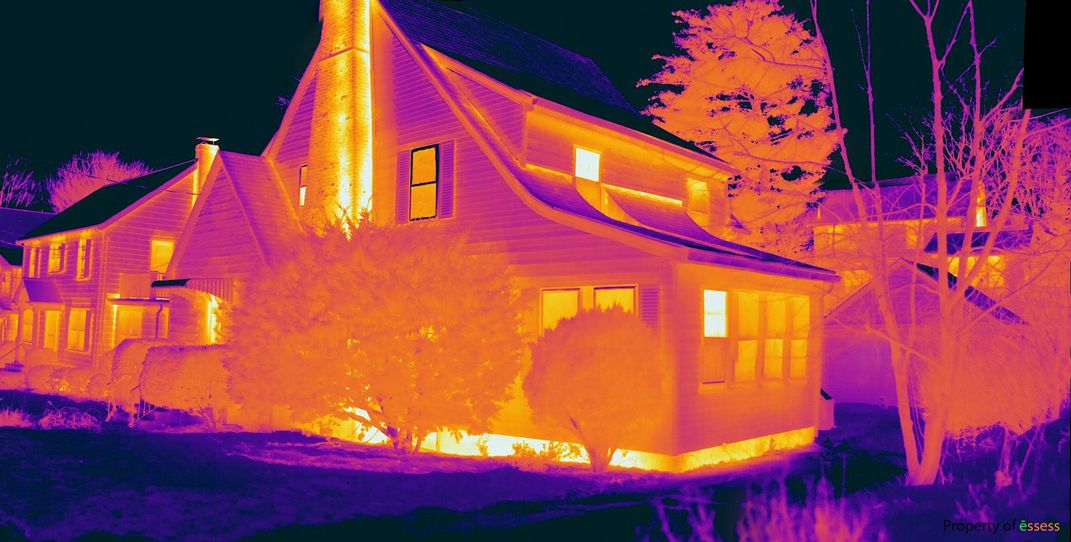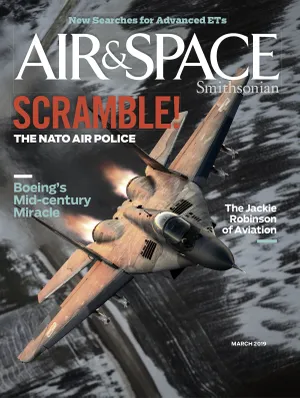Signs
We’ve been listening for extraterrestrials. Now we’re starting to look.
/https://tf-cmsv2-smithsonianmag-media.s3.amazonaws.com/filer/02/25/0225f70f-d37d-4528-8fe1-783203c11af0/10c_fm2019_oumuamueso1820a_live.jpg)
The detection of intelligent beings elsewhere in the universe would, by almost any measure, top the list of most dramatic discoveries ever. Yet the search for advanced extraterrestrial life has drawn relatively few scientists and almost no funding. While NASA and other space agencies actively hunt for biosignatures beyond Earth—signs of simple, microbial life—the little-green-men giggle factor has limited the seemingly more difficult search for evidence of civilizations residing, perhaps thriving, beyond our solar system. That quest has been left largely to the private sector, most significantly these days to the SETI Institute (Search for Extraterrestrial Intelligence) in California.
Recently, though, the field has been going through a period of soul-searching and even a name change, and has emerged with a certain amount of new respectability. Last September, at the request of Congress, NASA convened a group of scientists in Houston to assess progress and problems facing the search for “technosignatures,” the signs of advanced extraterrestrials. Michael New, the agency’s deputy associate administrator for research, even suggested NASA may be willing to fund this work, if Congressional interest persists, despite having been mostly out of the SETI business for decades. Jason Wright, a professor of astronomy and astrophysics at Pennsylvania State University and chair of the science organizing committee for the Houston conference, said it could be a turning point for the field.
“I think the most useful part of the meeting was seeing genuine interest from NASA folks about supporting the technosignatures community,” he said. “There has been no SETI conference this big and this good in a very long time.”
For most people, the term “SETI” refers to radio searches of the kind that have been under way, off and on, since the 1960s. Although dish antennas around the world have listened with ever more sophisticated instruments for some kind of pattern suggesting an intelligent origin, so far no one has heard anything beyond the natural radio noise produced by galaxies, stars, and planets.
Given the needle-in-a-haystack nature of the problem, this silence is hardly surprising. The radio search operates in nine dimensions, if you consider all the parameters from spatial coordinates to time to polarization of the signal. And so far, the total search space covered is equivalent to a small swimming pool compared to all the Earth’s oceans.
While traditional SETI continues to improve and expand, attendees at the October conference also discussed other options beside radio searches. Talks ranged from how industrial pollutants discovered in an exoplanet’s atmosphere could be a strong signal of advanced life to the recent discovery of unusual astronomical objects that defy easy explanation.
Among these oddballs is ‘Oumuamua, Hawaiian for “scout,” which in 2017 became the first object known to enter the solar system from interstellar space. First it was thought to be a comet, but closer examination showed that it lacked the icy cloud of gas and dust characteristic of comets. Astronomers then reclassified it as an asteroid, although that also had to be revised when analysis of the object’s orbital motion showed that something other than simple gravitation might be at work. Is it spewing small amounts of gas after all?
Long, shiny, and unusually thin for a space rock, ‘Oumuamua could conceivably be a probe or other type of artifact from another solar system, according to at least one team of researchers. Harvard astronomer Avi Loeb and postdoc Shmuel Bialy wrote in the Astrophysical Journal that the object has features unlike anything else detected in space. “[O]ne possibility is that ‘Oumuamua is a lightsail, floating in interstellar space as debris from advanced technological equipment,” they wrote.
That does not appear to be a widely accepted view in the astronomy world. Still, researchers from the SETI Institute in California used the Allen Telescope Array to listen for any transmissions from the interstellar visitor, just in case. (They heard nothing.) And ‘Oumuamua got astronomers thinking about what else might be flying into the solar system from beyond and how they might identify potential artifacts from distant civilizations. Indeed, last November Loeb and colleagues reported the detection of what they propose could be four more interstellar objects.
Then there’s Tabby’s Star, which has been investigated by Louisiana State University astronomer Tabetha Boyajian and others, as well as by citizen scientists. Light curves of the star—what scientists use to track changes in brightness—show deep and irregular dips, the likes of which had never been seen before.
After several traditional explanations were proposed and discarded when they didn’t match the data, Penn State’s Wright proposed that the star was perhaps surrounded by an alien megastructure—a “Dyson sphere” designed by sophisticated beings to harness energy on a massive scale. Physicist Freeman Dyson envisioned such a possibility more than 50 years ago.
Other plausible explanations have been put forward for the strange light curves, including unusual concentrations of dust around the star, and Wright agrees that a natural cause is more likely. But the debate over Tabby’s Star has led astronomers to ask questions and consider possibilities they may not have entertained in the past.
Columbia University astronomer David Kipping, another presenter at the September conference, argued that astronomers looking for technosignatures should study tiny anomalies in the thousands of light curves collected so far of planets transiting stars. He has been trying to transform some details of those anomalous curves into shapes that could be alien constructs. It’s early work, he said, but the effort speaks to an untapped resource and another way to think about technosignatures. Armed with an approach he calls a “weird detector,” Kipping looks at light curves that may have been discarded as false positives when scientists searching for exoplanets sifted through data from Kepler and other telescopes. “What I propose is that these transit false positives are the best place to look for technosignatures,” he said. “Since we are looking to some extent for the unimagined, we need to data-mine for distortions in light curves.” This is highly time-consuming work, but Kipping points to Tabby’s Star as an example of how amateur planet hunters have already played a major role in finding an unusual light curve that could point to a new astronomical phenomenon.
Most radio and optical SETI searches to date have had the same limitation: They stare for a period of time, usually less than 10 minutes, at one or several stars, then move on to the next one. If a flash of light or a radio beep happens outside those 10 minutes, we never know it.

A project called PANOSETI (Pulsed All-sky Near-infrared Optical SETI), funded in part by Qualcomm co-founder Franklin Antonio, offers a potentially revolutionary, and relatively inexpensive, way out of this dilemma. Astronomer Shelley Wright of the University of California at San Diego and Harvard University’s Paul Horowitz have designed a novel instrument that would monitor the full sky for very short (a billionth of a second to one second) pulses of light, which, according to Wright, could come only from technological civilizations. Such a signal, she said, would be “a burning fire in the forest.”
Covering the whole sky with traditional telescopes would be enormously expensive, so the team took a new approach. Their telescope uses 100 compact, wide-viewing Fresnel lenses—initially invented for lighthouses—tiled onto a geodesic dome, then connected to high-speed, multi-pixel photon counter detectors. Once deployed (most likely in California), one of these instruments will be able to see the entire observable night sky at once, and would scan the whole northern hemisphere over the course of a year as Earth orbits the sun.
In addition to discussing projects like PANOSETI, attendees at the Houston conference also addressed big-picture questions about what signs of technological activity we might reasonably expect to see at interstellar distances. Planetary Science Institute astrobiologist David Grinspoon, University of Rochester astrophysicist Adam Frank, and astronomer and former director of the Center for SETI Research Jill Tarter (see “Jill Tarter Believes,” August 2017) all focused on harnessing energy—whether from stars, tides, fossil fuels, or other sources—as the hallmark of a civilization. Any “advanced” work being done by extraterrestrials should change their planet in ways that would produce identifying fingerprints.
Most notably, they said, a technological civilization should give off excess heat as a byproduct of its energy use. Infrared observations of stars and planets to reveal thermal emissions are already under way and are getting more sophisticated with each new generation of telescope. But how to explain the heat signature of any particular exoplanet is very much a work in progress.
Beings that have reached a high level of what Frank calls “exo-civilization” would also likely produce pollution as a result of their energy use, which means that unusual elements found in the atmosphere or on the surface of an exoplanet could be a sign of advanced life. One example from our own planet is the family of chlorofluorocarbons (CFCs) used in refrigerants and solvents that damaged Earth’s ozone layer. In theory, CFCs could be detected by the James Webb Space Telescope (scheduled for launch in 2021) if they exist at a high enough concentration in an exoplanet’s atmosphere.
Grinspoon and Tarter proposed other potentially detectable signs of an exo-civilization, such as glints from massive energy collectors on a planetary surface. Planets with unusually stable weather (no severe storms, for example) could hint at deliberate modification by its inhabitants. Solar systems with remarkably similar planets could be the product of engineering.
The technosignatures discussion inevitably bumps into a disturbing thought: Intelligent civilizations like our own, said Grinspoon, may be prone to self-destruction, whether from nuclear weapons or technology-induced climate change, and may spend only a relatively short time on the cosmic stage. Some exo-civilizations, he imagines, may avoid potentially fatal bottlenecks through savvy or perseverance. If they survive an adolescence such as the one we’re in now, such civilizations could become “semi-immortal,” Grinspoon thinks. They might learn to modify harmful climate cycles, fend off asteroids, or even adapt to the brightening or dulling of their host star. The trick to finding these truly evolved civilizations, he said, would be to look for technosignatures that reflect unexpected stability rather than rampant growth.
Whatever evidence of exo-civilizations we ultimately decide would be the most convincing, the discovery of intelligent beings elsewhere in the universe will probably not come in a single “aha” moment, says Sara Walker, an expert in complex systems and astrobiology, and deputy director of the Beyond Center at Arizona State University. Rather, it will involve a number of signatures considered together.
Paradoxically, it may be easier to recognize and confirm intelligent aliens than microbes on Mars or Europa. Biosignatures pointing to basic biological activity “are probabilistic; they may or may not be produced by life,” she says. “There is always a chance we won’t be really sure we detected life. But a technosignature is much less ambiguous. There is, for example, no known non-biological or technological process that could make a Dyson sphere or a rocket ship.”
At the September conference, Michael New of NASA said the space agency, pending the approval of the White House and Congress, is open to the idea of funding new surveys, instruments, and data-mining algorithms, as well as theoretical work and modeling studies that could help us find whatever advanced beings are out there. He threw out a potential figure of $10 million in grants. “The time is really scientifically ripe for revisiting the ideas of technosignatures and how to search for them,” he told the attendees. A new generation of searchers will no doubt be happy to take up the challenge.
